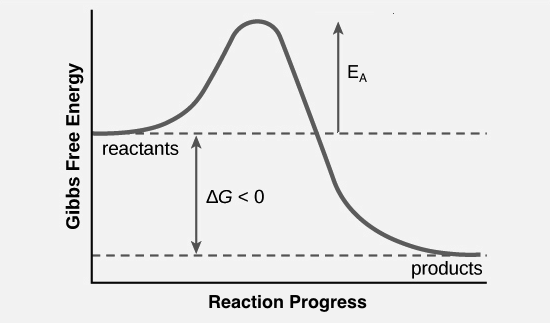Introduction
In the realm of decision-making, there exists a powerful mental model known as “Activation Energy.” This concept refers to the initial effort required to start or initiate a particular action or behavior. Understanding Activation Energy is crucial as it influences our decision-making processes and shapes our ability to overcome obstacles. In this comprehensive blog post, we will delve into the definition of Activation Energy, its relevance in decision-making, its prevalence in our daily lives, examples of its occurrence in various contexts, the biases contributing to it, strategies to identify and overcome Activation Energy, and the implications of awareness and active avoidance of this mental trap.
Defining Activation Energy and Its Relevance
Activation Energy, as a mental model, represents the hurdle or barrier we must overcome to initiate a decision or action. It encapsulates the effort, motivation, or resources required to move from a state of inaction to taking the first step. This mental model is deeply rooted in human psychology, as our minds tend to seek the path of least resistance and often resist change or new endeavors. Activation Energy plays a vital role in decision-making by influencing whether we take action or remain stagnant.
The Relevance of Activation Energy in Decision-Making stems from its impact on our ability to follow through on choices and plans. Many promising ideas and opportunities fail to materialize due to the inability to overcome the initial hurdle of starting. By understanding and addressing Activation Energy, we can increase the likelihood of translating our intentions into actions.
Examples of Activation Energy in Various Contexts
- Personal Life Decisions: Consider an individual who wishes to embark on a fitness journey. They set a goal of exercising for 30 minutes every day. However, the Activation Energy required to initiate the first workout proves to be a significant barrier. The person finds it difficult to motivate themselves to begin, succumbing to the comfort of inertia and delaying the start of their fitness regimen. By failing to overcome the Activation Energy, they jeopardize their health and well-being.
- Business Scenarios: In the business world, Activation Energy plays a pivotal role in entrepreneurial endeavors. A budding entrepreneur might have a brilliant business idea, but the effort and resources required to take the first steps, such as conducting market research, securing funding, or building a prototype, can become daunting barriers. If the entrepreneur succumbs to the Activation Energy, their idea remains unrealized, leading to missed opportunities and unrealized potential.
- Public Policy-Making: Activation Energy also has implications in public policy-making. Suppose a government aims to promote renewable energy adoption among citizens by offering subsidies and incentives. However, if the administrative processes and paperwork required to access these benefits are convoluted and time-consuming, the Activation Energy to participate in the program increases. This can deter individuals from taking advantage of renewable energy initiatives, hindering progress towards sustainable goals.
Mental Biases and Psychological Underpinnings
Several mental biases contribute to Activation Energy, including the status quo bias and loss aversion. The status quo bias predisposes individuals to maintain their current state or inertia rather than initiating change. It amplifies the Activation Energy required to start something new or different. Loss aversion, a cognitive bias that emphasizes the fear of loss over potential gains, also contributes to Activation Energy by making individuals cautious and resistant to taking risks or exploring uncharted territories.
Other psychological underpinnings of Activation Energy include fear of failure, perfectionism, and decision paralysis. Fear of failure creates an emotional barrier that hinders individuals from initiating actions due to the potential negative outcomes. Perfectionism leads to an unrealistic expectation of flawlessness, increasing the Activation Energy required to start, as individuals strive for ideal conditions or circumstances. Decision paralysis, driven by information overload or excessive analysis, creates a barrier by making the Activation Energy seem overwhelming.
Identifying and Overcoming Activation Energy
To identify when Activation Energy is hindering decision-making, individuals can watch for the following signs:
- Procrastination: Persistent delays or putting off tasks that align with their goals may indicate the presence of high Activation Energy.
- Excuses and Rationalizations: Frequent use of excuses or rationalizations for not taking action suggests the presence of Activation Energy barriers.
- Stagnation and Lack of Progress: A consistent lack of progress or failure to move forward on plans or goals may indicate a struggle with Activation Energy.
To overcome Activation Energy, consider the following strategies:
- Break Tasks into Smaller Steps: By breaking down a larger goal or task into smaller, manageable steps, the Activation Energy becomes more attainable and less overwhelming.
- Create a Supportive Environment: Surround yourself with people, resources, and tools that support your desired actions and minimize the effort required to start.
- Utilize Accountability: Share your intentions and goals with others who can hold you accountable, providing support and encouragement to overcome Activation Energy.
- Visualize the Benefits: Envision the positive outcomes and benefits that will result from taking action. This visualization can motivate and reduce the perceived Activation Energy.
Conclusion
Activation Energy is a powerful mental model that affects our decision-making processes and influences our ability to take action. By understanding the concept’s relevance, prevalence in various contexts, and the biases that contribute to it, we can navigate the barriers that impede progress. By identifying signs of Activation Energy and implementing strategies to overcome it, individuals can empower themselves to move forward, seize opportunities, and achieve their desired outcomes. Awareness and active avoidance of this mental trap are crucial for personal growth, business success, and societal progress. Remember, the journey starts with overcoming Activation Energy, one step at a time.
